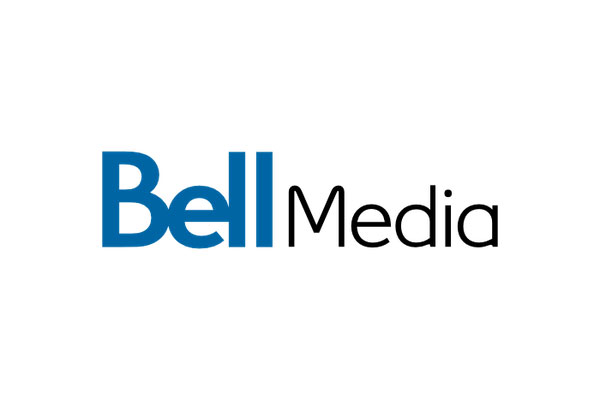PREMIUM: Mary Ann Turcke, the president of Bell Media, talks to World Screen about the factors that have been contributing to CTV’s ranking as the number one network in Canada for so many years.
WS: What was the strategy behind Bell Media’s restructure last year?
TURCKE: The media sector, in Canada and around the world, is facing rising content costs, regulatory change, and technological innovation that impact traditional revenue streams.
Our new structure reflects the reality of the industry and positions us for success, now and in the future, and allows us to focus our efforts and resources on content, programming and technological innovation.
WS: What factors have been contributing to CTV’s ranking as the number one network in Canada for so many years?
TURCKE: The power of our schedule in all day parts, but driven by prime time, is a result of several key factors. We have a consistent track record of identifying and acquiring the next-generation hits from U.S. studio partners. Recent examples include Quantico, Blindspot, Lucifer and The X-Files reboot, as well as our high-performing returning programs such as Canada’s number one series The Big Bang Theory and top-rated series Gotham, The Flash, How to Get Away with Murder, and Marvel’s Agents of S.H.I.E.L.D., to name a few. We develop and commission the best slate of original Canadian programming, including ratings hits The Amazing Race Canada, Saving Hope and MasterChef Canada. We complement Canada’s number one national newscast, CTV National News, with local news, ensuring the CTV News brand is the number one go-to source for news throughout the entire day, as well as online. Our programs are promoted heavily with the “Bell Media Megaphone,” a strategic and coordinated effort by our promotions, publicity and marketing teams. We put a premium on partnerships and the value of our brand. In short, we create a schedule where viewers want to be and where advertisers want to reach them.
WS: How are you seeing viewing habits change?
TURCKE: TV is still the dominant video platform. Collectively, Canadians consumed 48.4 billion hours of TV last year; that’s on par with five years ago and up 15 percent over the last ten years.
The average Canadian adult spends about 28 hours per week watching TV, but just 3.8 hours per week with Facebook, 1.5 hours with YouTube and 36 minutes with Netflix.
WS: How have Bell Media’s GO streaming services been received by viewers?
TURCKE: We are very happy with the performance of and the consumers’ response to our GO video streaming services and our TV Everywhere strategy overall. We now have 12 GO services: CTV GO, TMN GO, TSN GO, RDS GO, Super Écran GO, CTV News GO and CP24 GO.
In 2015, we saw video consumption on Digital GO products grow 39 percent year-over-year on mobile devices (phone, tablet and OTT), with CTV GO increasing 28 percent in terms of average monthly video starts over 2014.
WS: Tell us about the success of CraveTV. What has made it so popular?
TURCKE: CraveTV is all about incredible content for TV lovers, on the device of their choosing. And now that we’ve launched directly to consumers, that content is available to all Canadians. Two of our most popular shows are Showtime’s big-buzz Billions, and our first CraveTV Original, Letterkenny—these are both zeitgeist-grabbing, crowd-pleasing titles that are drawing Canadians to the product. CraveTV’s offering is unbeatable in Canada, with must-watch HBO titles like The Sopranos, Entourage and Sex and the City; current Showtime hits such as the Golden Globe-winning The Affair, Penny Dreadful and Ray Donovan; franchise series and genre-defining brands like South Park, Seinfeld and The Flash; and exclusives such as Manhattan, Bosch and the upcoming Casual.
In total, CraveTV features more than 11,000 assets, more than 300 series, and nearly 500 specials and documentaries, in addition to more than 20 curated collections, from every major Hollywood studio. And thanks to recent deals with HBO and Showtime, the content is going to keep coming. HBO’s The Newsroom, True Blood and Boardwalk Empire are all slated to stream on the service soon; and from Showtime we’re looking forward to a new season of Penny Dreadful as well as new series like Dice and Roadies.
WS: How is Bell Media appealing to young consumers who may not want a cable subscription?
TURCKE: First of all, despite all the noise, young consumers still watch traditional TV programming, with 96 percent of 12- to 24-year-olds watching TV weekly and 82 percent daily. Millennials spend 19 hours per week watching TV; that’s 3.3 times more than they spend with Facebook, Instagram and Twitter combined, 7.6 times more than YouTube and 17 times more than Netflix.
Bell Media delivers great content to viewers whenever and wherever they want it through our slate of TV Everywhere properties that are available direct-to-consumer and on many connected devices.
In addition, we launched Much Digital Studios in 2015, a multichannel network of Canadian and international YouTube creators. This innovative and popular digital property is a new way for Bell Media to connect with Canadian youth. Much Digital Studios already has a roster of 36 creators, with 4 million subscribers, and their content is generating an average of 6 million views per week on YouTube.
WS: The CRTC has asked cable operators to unbundle and allow customers to pick and pay the channels they want, after purchasing a basic package. What impact will this have on the specialty channel industry at large in Canada?
TURCKE: A Globe and Mail study indicates 57 percent of subscribers will keep current packages and add more channels. The industry will move with the market. The market will move with the pricing and the value of television services. The more aggressive the pricing, the more pressure on revenue across the system. We’ve prepared by investing in our brands and in the end good content will prevail.
Furthermore, the CRTC lift on genre protection [the CRTC had allowed niche channels to keep their genre exclusive—for example, no channel could complete with the Food Network—in exchange for higher Canadian content requirements] gives us more flexibility and will allow us to leverage what we do best, which is offering the best content to Canadian consumers.
WS: What impact will pick and pay have on Bell Media’s specialty channel business?
TURCKE: In Canada, specialty viewing has increased by 58 percent since 2004-05 and I am sure that strong brands will have success in the pick-and-pay environment. We have prepared by investing in ours and building on our recent wins, such as Discovery reclaiming its position as the number one entertainment specialty channel among audiences 25 to 54 in full day viewing for the first time since 2009; Space enjoying tremendous success with hit original productions Orphan Black, Killjoys and Bitten; and TSN’s overall ratings triumphs in 2015.
Specialty TV audiences are loyal and passionate, so by constantly improving our brands and content offering, our very diverse and complementary specialty portfolio can only grow stronger. In fact, according to a study commissioned by Bell Media in 2014, Discovery, Space, Comedy, Bravo and TSN all rank within the top 20 channels respondents would be interested in subscribing to in a pick-and-pay environment.
And, as I’ve said, the CRTC’s lift on genre exclusivity will bolster specialty channels by allowing more flexibility in terms of programming.
WS: What are the forecasts for the advertising market in Canada this year?
TURCKE: We expect the advertising landscape to continue to evolve but maybe not as much or in the same way as some people would think. While there is no denying that advertising expenditure is more fragmented, TV remains the best vehicle to create or increase brand notoriety.
Canadians are more receptive and pay more attention to television advertising than that on other platforms. TV does more than respond to consumer habits, it creates them. Whatever your favorite brand, chances are you’ve first heard about it on TV. In fact, TV is the source of 44 percent of media-driven Facebook interactions for brands.
At Bell Media, we will leverage our world-class content and broad portfolio of brands on all platforms, including digital, and continue to invest in research and market insight to help advertisers and agencies make their brands shine.
WS: What are the most important issues facing Bell Media in the next 12 to 24 months? How will you position Bell Media to remain nimble and responsive to change, and yet continue to invest in programming and brands?
TURCKE: In addition to protecting specialty revenue by increasing investment in channels, we need to drive the value of TV to advertisers with great content but also with reliable insight and data such as an innovative automotive ROI Research we conducted in 2015, as well as grow digital revenue.
We will also focus on acquiring the best content, as illustrated by long-term, multiplatform deals we signed with HBO and Showtime in 2015 and that allow us to feed our channels with exclusive premium content for years to come.
Content creation is also one of our priorities and we will continue to leverage our leadership in the development of Canadian original content such as hit programs The Amazing Race Canada, Orphan Black and Canada’s Worst Driver.
 TVCANADA
TVCANADA





